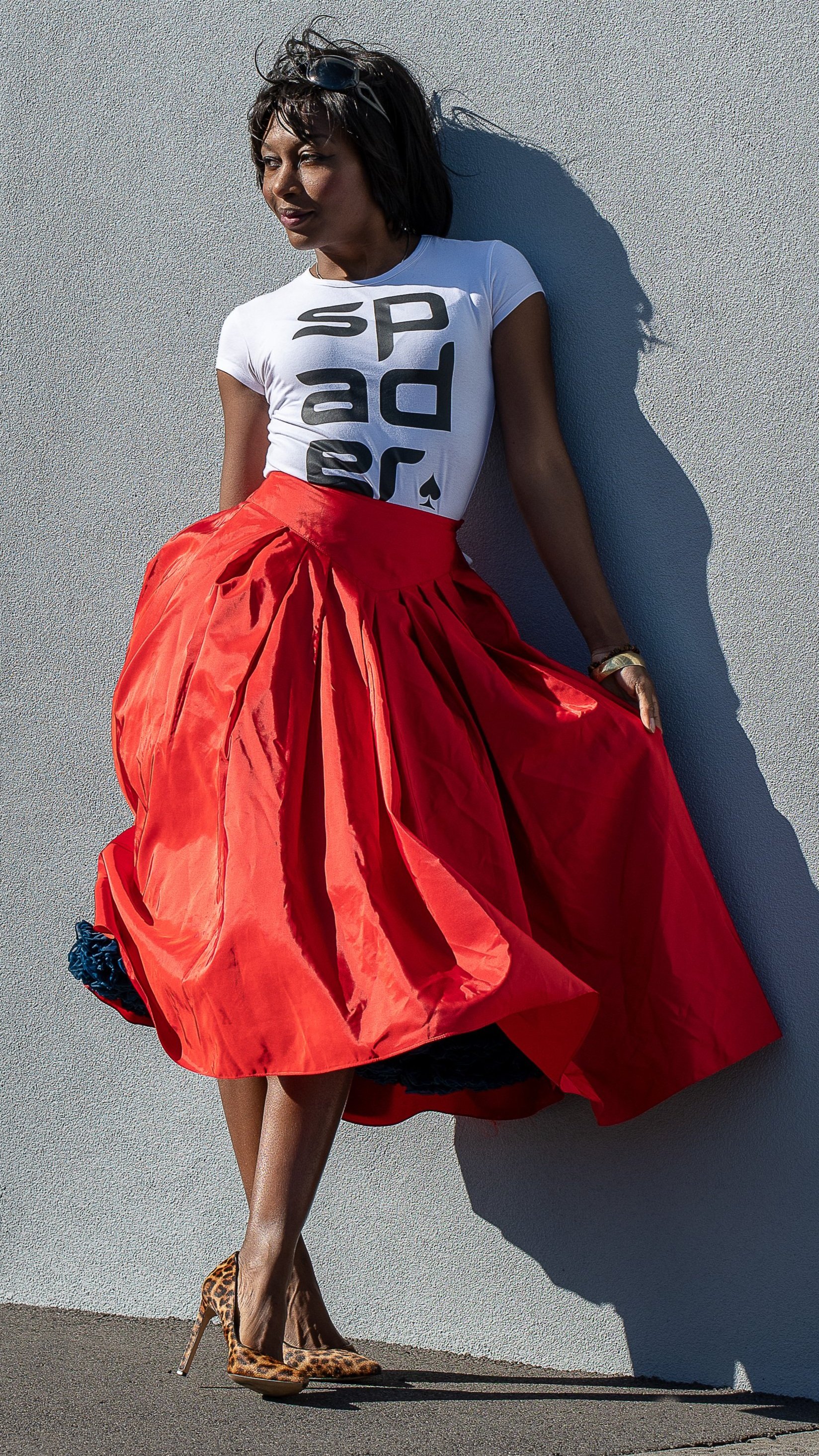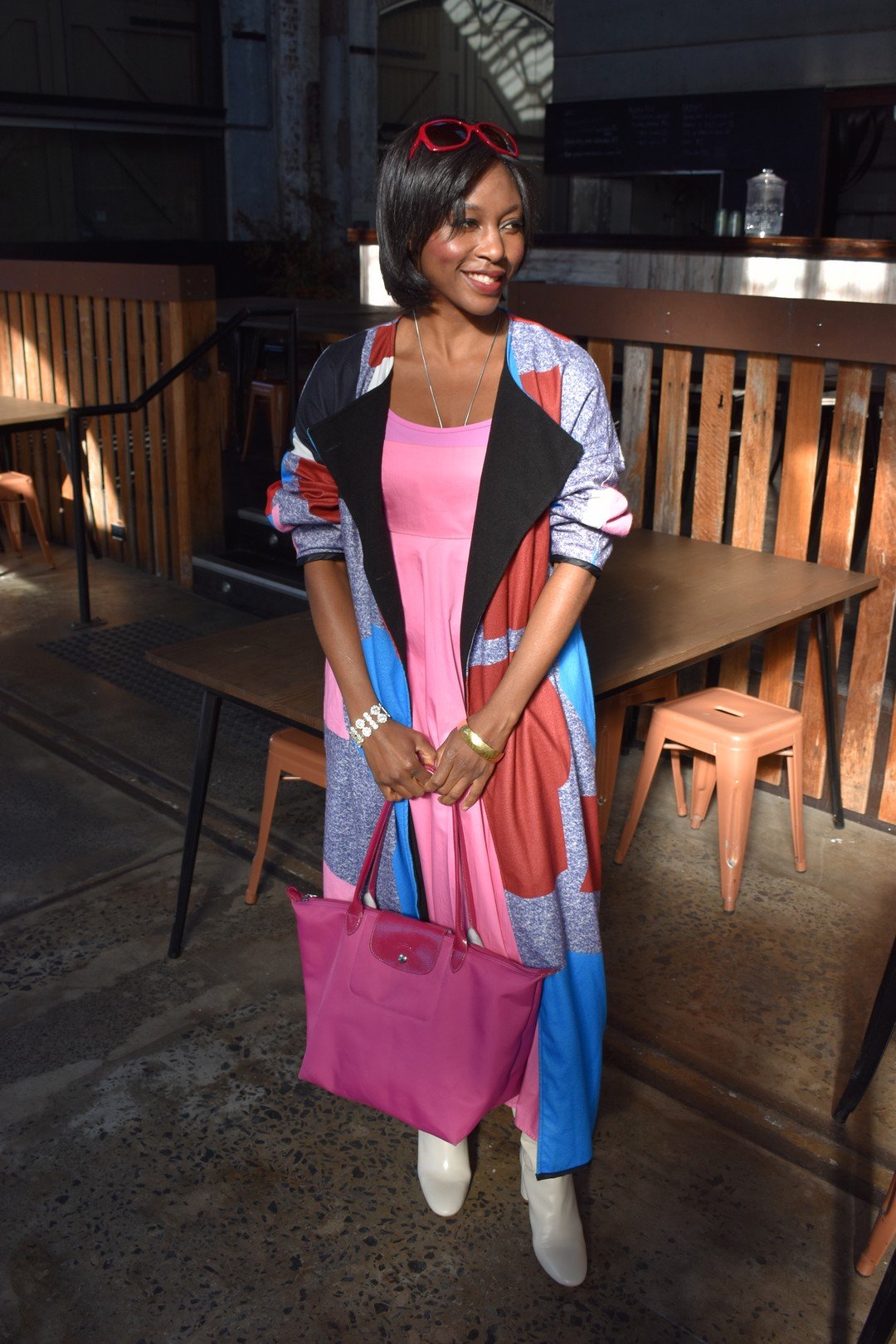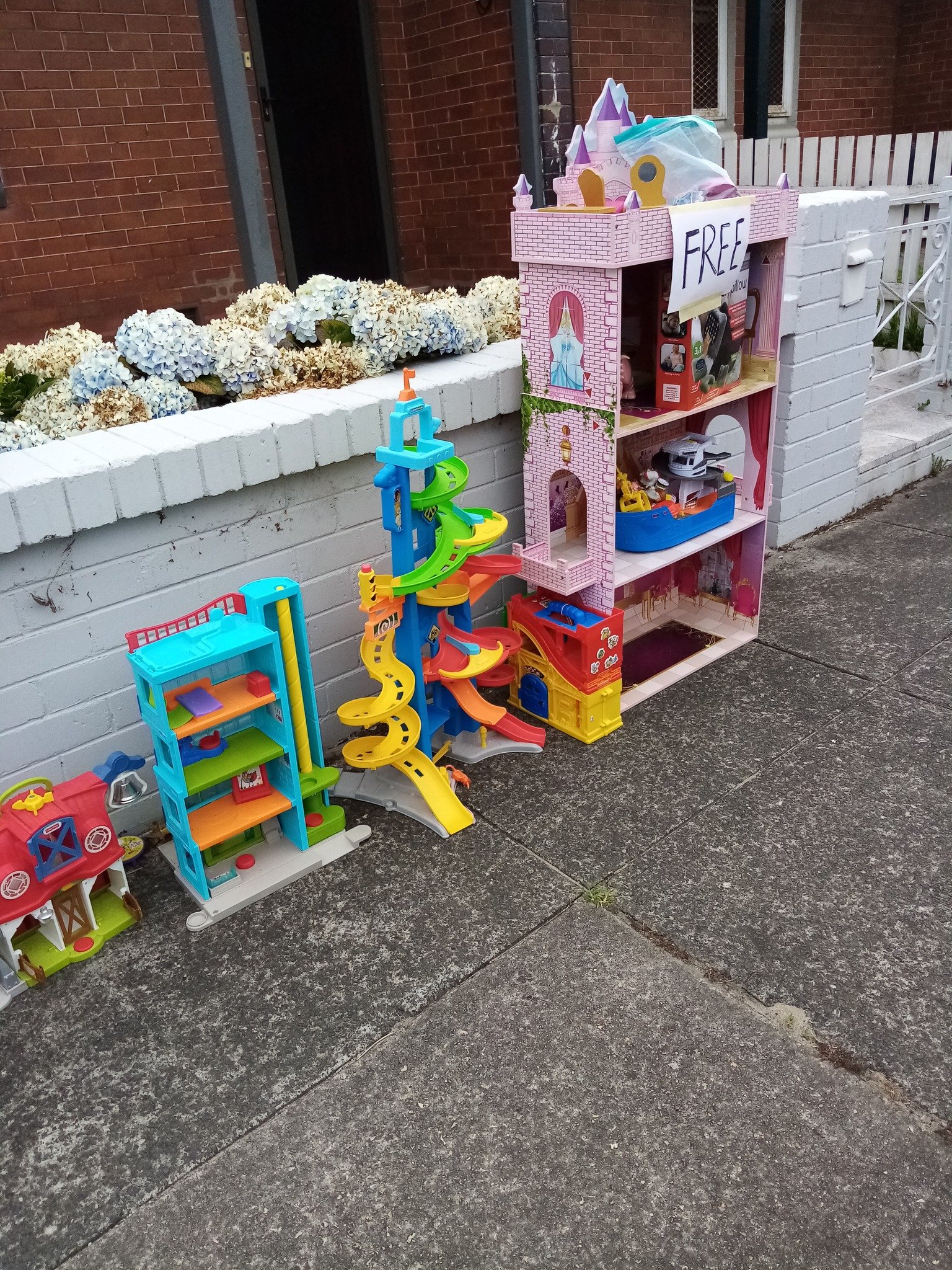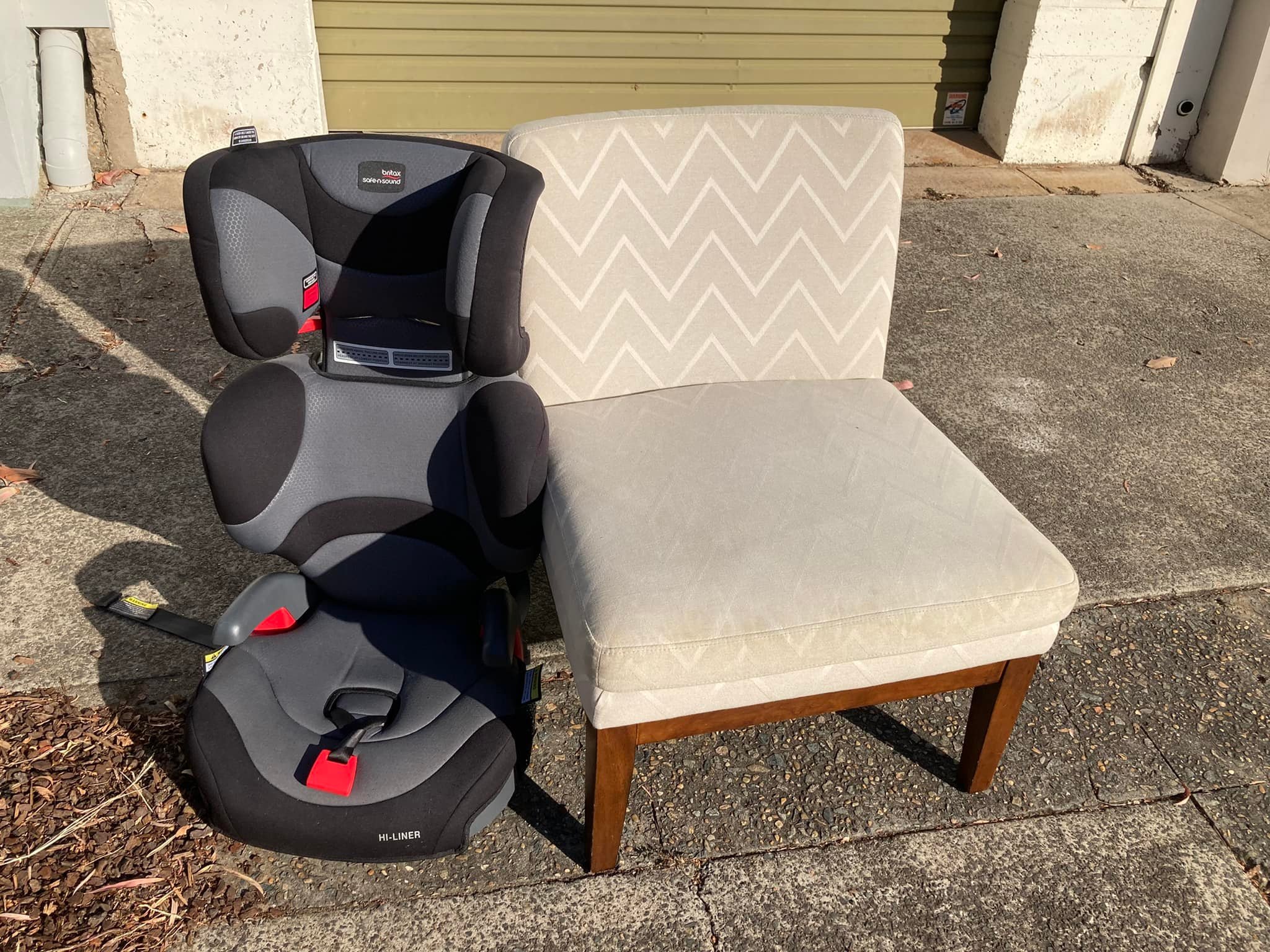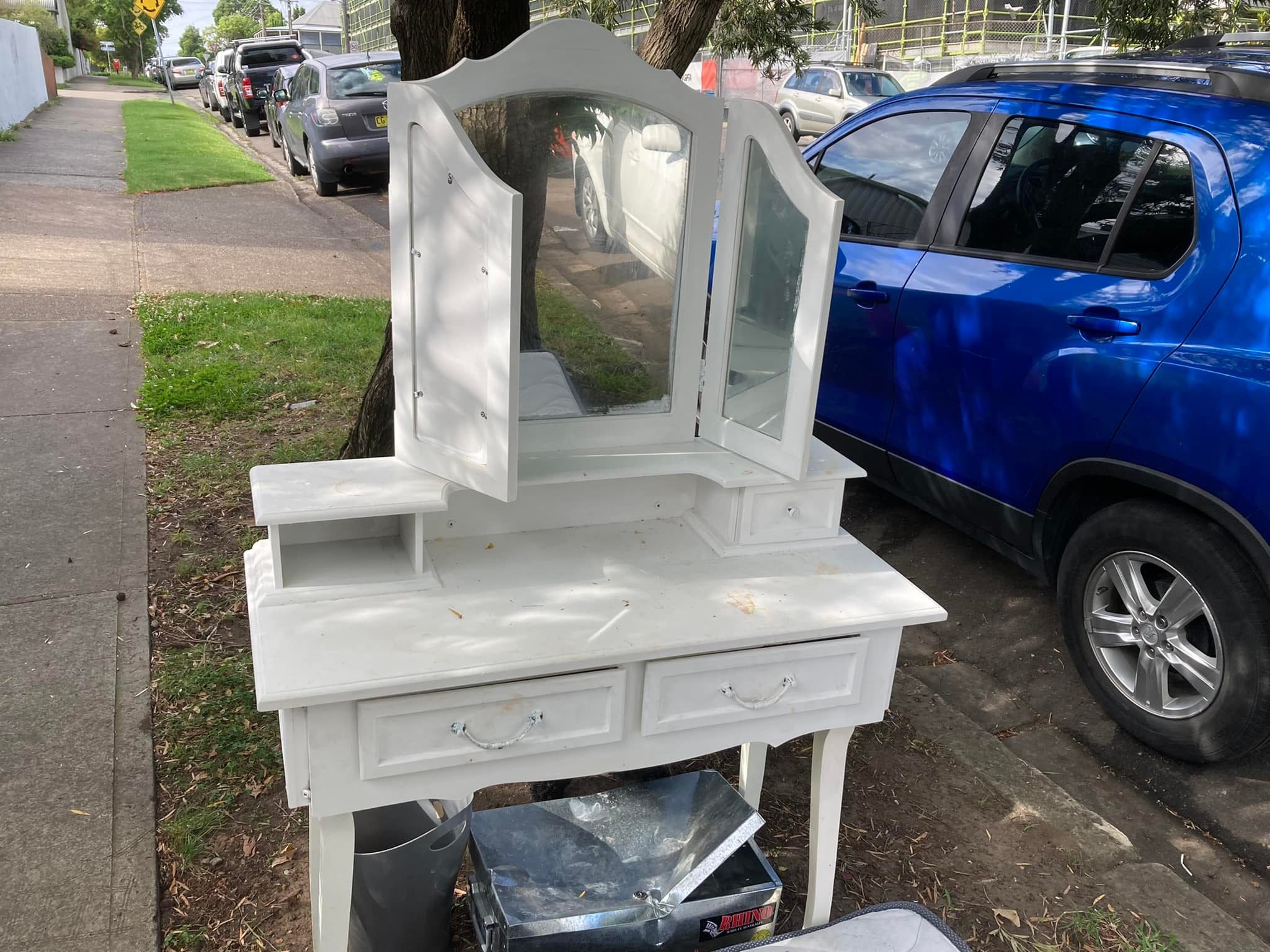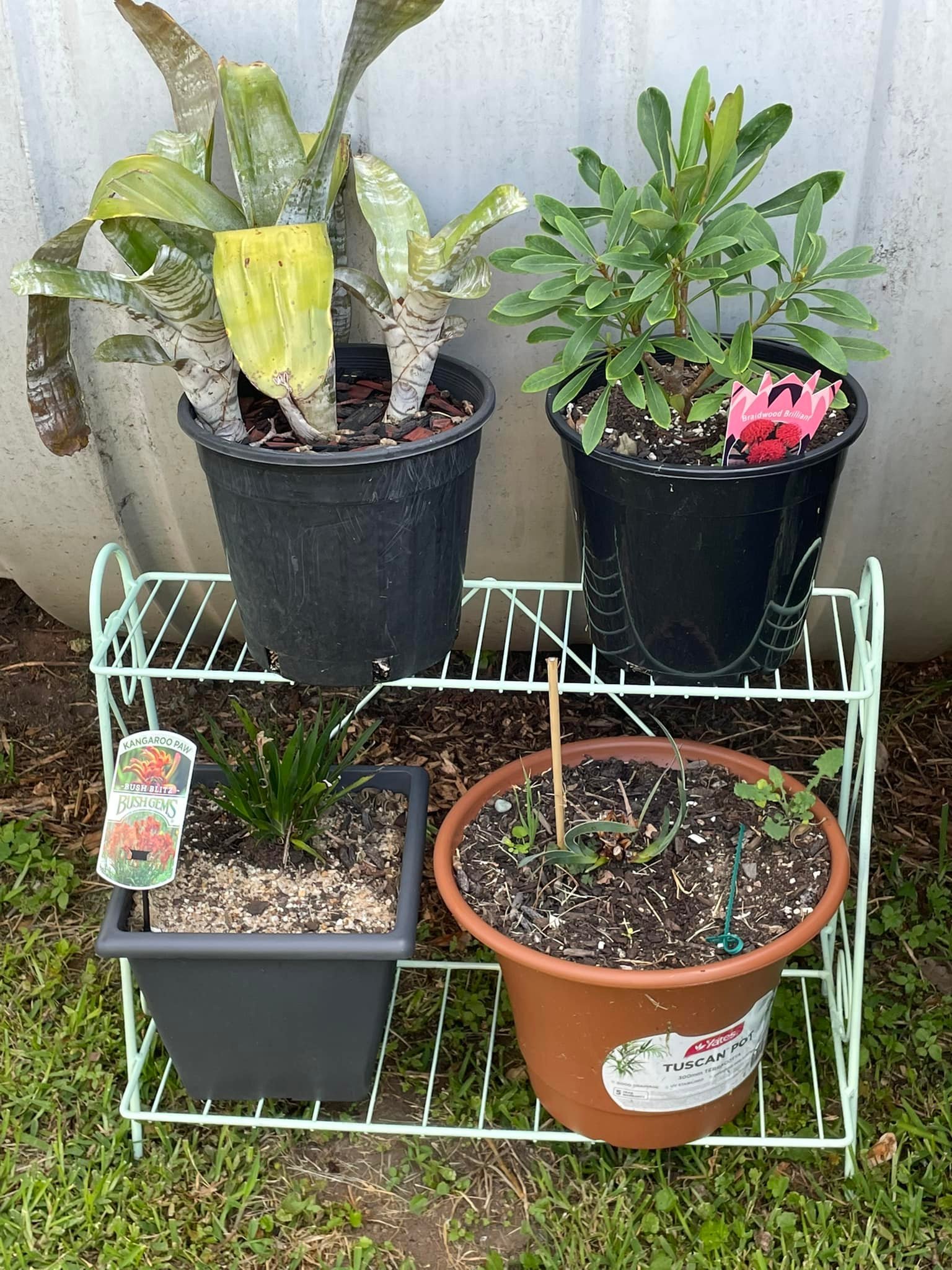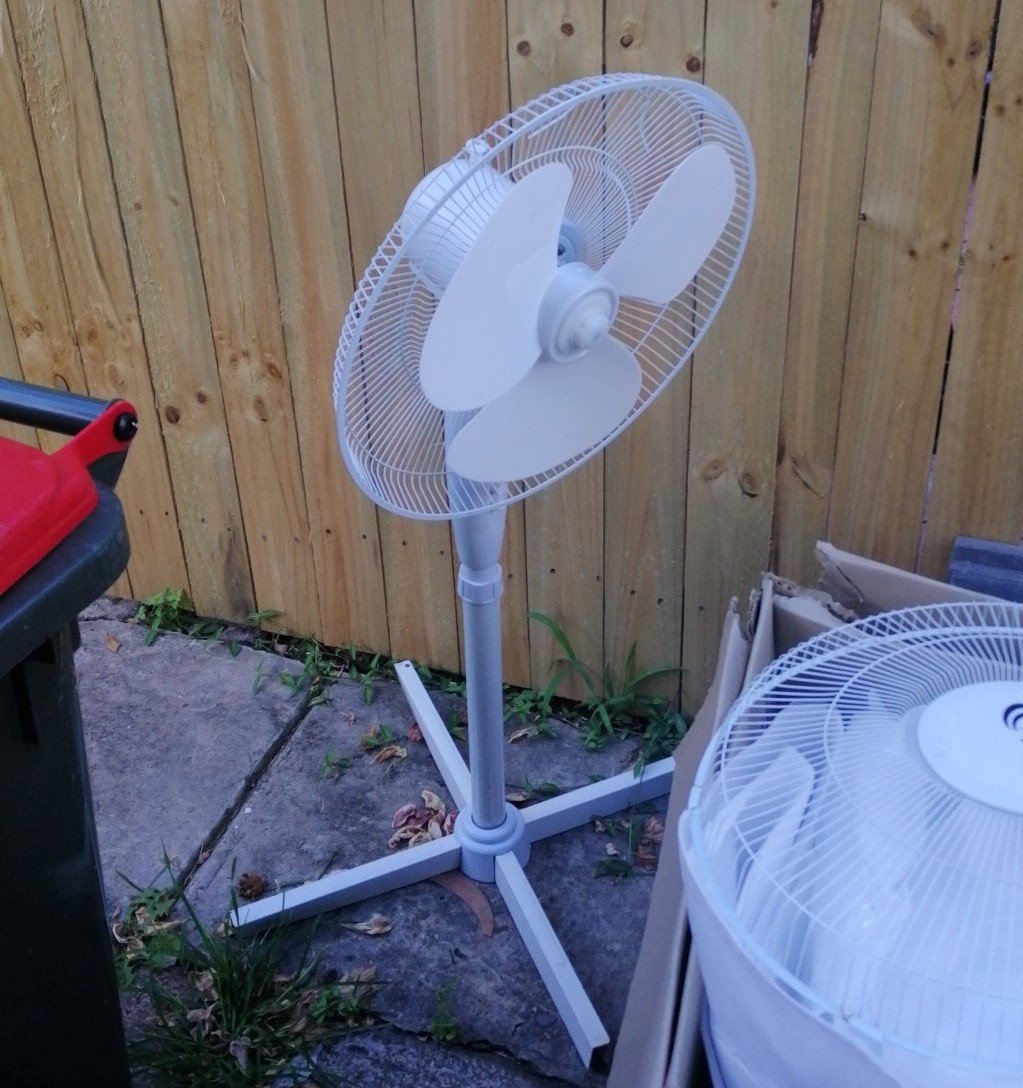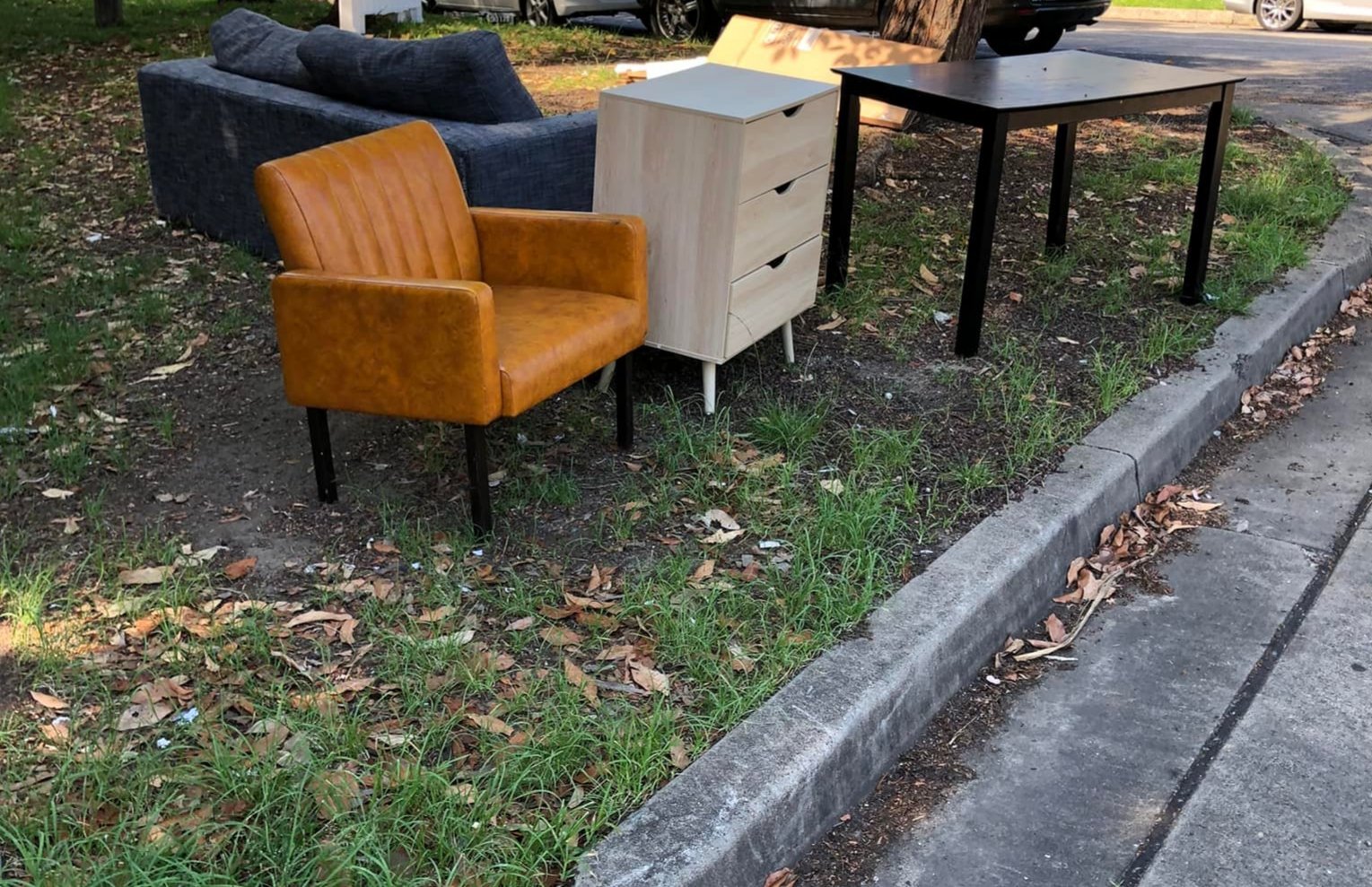We need to talk about the travesty that is the carbon credit and offset market. Perhaps ecocide laws might be an antidote to this fallacy.
The irreversible damage done to ecosystems, pollution and biodiversity loss should not be commercialised and traded in a capitalistic way on a market.
It's been reported that the earth is facing its 6th mass extinction driven by human activity, primarily (though not limited to) the unsustainable use of land, water and energy use, and climate change.
In the pursuit of extreme extraction of virgin materials for manufacturing and extreme capitalism that doesn't care about the impact that it has on the earth, whether directly or indirectly, the notion of taking another action that cancels the damage the company has done should not even exist.
Meanwhile, because of the harm done in the name of overproduction and growth, there are animal and plant species that we will never get back. Ever. And their habitats are in too many cases polluted, poisoned or destroyed. Same goes for the human lives, communities, their land and environments that have been destroyed and will continue to be ravaged unless we end deceptive concepts like carbon credit markets.
The EU has voted to introduce crimes that can be 'comparable to ecocide' in its revised Environmental Crime Directive. Ecocide as a standalone crime would mean the most senior board members or policy makers would be held legally accountable for decisions that lead to mass environmental harm, regardless of how that harm is caused!
Jojo Mehta, Co-founder and CEO of Stop Ecocide International, said:
“The historic vote from the EU to include ecocide-level crimes in its revised crime directive shows leadership and compassion, and will strongly reinforce existing environmental laws across the region. It will establish a clear moral as well as legal “red line”, creating an essential steer for European industry leaders and policy-makers going forward.”
Take action by signing a petition here.
We need this type of reform in countries across the globe.
Eco styles
The fashion TRENDmill explained /
I've been into sustainable fashion since I was 15 years old - wearing, promoting, styling and living the preloved lifestyle. This was long before sustainable fashion was a global movement and long before the term ‘sustainable fashion’ was a buzz word for nearly every brand and flocks of influencers. I abhorred fashion trends from a young age. I couldn’t understand why so many people clung tenaciously to a made-up reality where everyone is expected to wear the same trending styles of clothing until the dictators of fashion decided it was time to decree the next short-lived trend. This is fashion’s Jedi mind trick.
The fashion industry
In 2019, the size of the global apparel and footwear market was $1.9 trillion USD. It’s been projected to reach $3.3 trillion dollars by 2030. Several reasons exist as to why this industry is so lucrative. There’s the craftmanship, art, design, creativity, skills, beauty, artisanry and of course practicality that leads to the production of items that we love and find useful. In many instances, most or perhaps even all of these talents deserve to garner significant profits. But then there’s the dark side of the industry that has been inducing tremendous profits through atrocious practices. This side has been thriving on extreme capitalism with no concern for humans, animals nor the planet. The sole purpose is to amass huge profits at all costs. This is why we currently have 100 – 150 billion garments being manufactured each year, with only an estimated 8 billion humans to use them. It’s unsurprising that about 87% of items manufactured each year end up in landfill or incinerated.
Where fashion trends went wrong
This unchecked, environmentally degrading side of fashion has been able to grow and thrive so expeditiously in part due to the use of fashion trends. For probably about a century, following fashion trends was a significant part of social culture and clothing. It was portrayed in different forms. Fashion collections produced by brands have traditionally been designed and manufactured based on the four western weather seasons of Spring, Summer, Fall and Winter. The trends generally adhered to this as well. Fast fashion hijacked and exacerbated the idea of trends and took it from about 4 trend cycle collections a year, to about 110 trend and microtrend collections a year. Naturally the time from one trend to the next decreased in the process. This is one of the factors that lead to over 100 billion garments being manufactured each year. Not to mention the tsunami of environmental and social justice issues from this overproduction and overconsumption.
Fashion’s environmental and social injustice issues
For too many decades, the grody side of the fashion industry has been using clever big-budget advertising, marketing, influencers and celebrities, to successfully manipulate people into feeling that they’re not enough unless they’re wearing the latest fashion trends. They’ve been able to control this aspect of social culture and use it to catapult their profits by somehow coercing many people to consistently buy apparel they don’t need. This is all in the name of aspiring to fit into this warped system that requires allegiance to whatever is trending in the moment.
With more trends being put out each year, planned obsolescence by clothing brands has become rampant. This means clothes are being designed for limited use with shorter life spans so that consumers are forced or encouraged to repeat purchases because the initially purchased items are not durable. The garments made by many fashion brands are increasingly being made from cheaper, poorer quality materials such as polyester. When something is damaged, it’s often less costly to buy a new one than to repair it. Products made in this manner very often end up in landfill in relatively short periods of time. In other words, these clothes are made to be disposable. This is the take-make-waste system that exists in fashion and several other industries.
The cost of the trends
The environmental damage from this excessive oversupply occurs at scale through deforestation, ocean and freshwater pollution, destruction of ecosystems and animal habitats, desertification, toxic chemical loading in soil and water bodies, etc. UN Climate Change states that annually, 1.2 billion tonnes of greenhouse gases are emitted from textiles production. By some calculations, sector emissions are projected to increase by more than 60% by 2030. In addition to that, there’s the devastating problem of modern slavery where garment workers are exploited, abused and drastically underpaid so that brands can make extreme profits. According to the 2022 Ethical Fashion Report conducted by The World Baptist Aid, 60 million people work in the global fashion industry. To give context to the general nature of social injustice and inequality in the industry, only 10% of companies surveyed in the report could show evidence of paying liveable wages to garment workers.
The personal style con
In the last few years, mainstream fashion began to drop the habit and promotion of following fashion trends. Embracing one’s own personal style became the thing to do. At the outset this shift appeared very positive for the environment and consumers alike. However, it didn't take long for fast fashion to find a way to also capitalise on the personal style wave by getting people to 'find or express their personal style' through constantly buying lots of fast fashion.
The shocking and sad truth is that following fashion trends never stopped. It simply changed form. OVERCONSUMPTION HAS BECOME THE LONGSTANDING TREND. In fact, overconsumption is our modern cultural trend. We’re consuming 400% more clothing than we did 20 years ago, while the length of time we use the garments has fallen by almost 40%. It’s no longer only about buying trends and microtrends to fit in with everyone else and the culture. Now the normal thing is to just buy stuff period because it’s easy, cheap or convenient to do so, then throw it away when you’re bored with it. And then buy other brand new stuff again and repeat the cycle. Fast fashion has made clothes more affordable than ever before.
The fashion TRENDmill explained
The fashion TRENDmill (or fashion treadmill) is a phrase I came up with in 2016 to describe this modern culture of mindless overproduction and overconsumption of clothing that has become too common and normalised in our world. With these factors being the trend, this conveyor belt system is fuelled by the continuous take-make-waste linear cycle on steroids.
We take (extract raw materials or virgin resources from the environment at enormous rates far beyond what we need). Then make (manufacture far more garments than is necessary or will be used). Followed by waste (majority of clothes end up in landfill relatively quickly). Disposability of clothes is embedded and expected in this cycle either through the culture of it or through planned obsolescence. There’s little or no consideration for reusing or prolonging the life of the textiles or the damage the TRENDmill system inflicts on the planet and its inhabitants.
The TRENDmill and general overconsumption
There’s a very strong throughline of the fashion trendmill concept with other waste streams such as food, furniture, electronics, automobiles, the built environment and hospitality.
We’re consuming more products than we ever have in human history. Nearly A$66 trillion worth of stuff is being purchased every year globally which is the equivalent of an estimated A$2 million per second. These purchases include the gamut of material stuff and possibly services. The world’s use of material resources has increased ten-fold since 1900 and is projected to double again by 2030. It’s been projected that the consumer class will reach 5 billion people by the year 2030, meaning 1.4 billion more people will have discretionary spending power which explains why consumption rates are expected to double unless we get off the TRENDmill.
We’re consuming our way into our own extinction
With these enormous levels of manufacturing and consumption, environmental degradation is at an all time high. This comes with things like toxic chemical loading on soil and water and extreme plastics pollution. These and other factors have been known to have fatal impacts on human health. As production keeps increasing, it looks as if we’re consuming our way into our own extinction.
A drastic reduction of natural resource use is critical. We need cultures and systems based on environmental sustainability and circular economy principles. There are colossal opportunities for us to stop the rapid flow of materials to landfill and reuse or repurpose these materials instead. And in the process, only take what we need from the earth. It will make our lives healthier, save the lives of animal species, reduce biodiversity loss, give us cleaner water, a healthier planet amongst other benefits.
How to get off the fashion trendmill
We currently have enough clothing on the planet to cater for the next 6 generations of humans. From the start of my sustainable fashion career, I've always talked about ignoring trends in favour of finding and expressing your personal style for the long term through secondhand garments (and not fast fashion). Secondhand clothing includes contemporary styles and clothes from nearly every fashion era dating back almost a century. One of the coolest ways to curate a sustainable wardrobe is to mix and match styles from one or multiple fashion eras to create your own individual style. It’s likely that this one-of-a-kind wardrobe tailored to your preferences will have any or all of these outcomes:
1. keeping your clothes for longer periods of time because you always look great even with very little effort
2. saving financial resources because you’re buying less brand new stuff
3. evolving to the best or desired version of yourself using secondhand clothes.
Getting off the fashion trendmill helps reduce clothing waste because in a sustainably curated wardrobe, the outfits suit your body, lifestyle and personality. With these aspects fulfilled, hopefully the temptation to consistently buy new clothes or fast fashion all the time can begin to fade or get eliminated altogether.
Getting off the trendmill on a systemic level
Ultimately, we need to implement circular economy principles into textiles and other industries. Things will shift when we change our relationship with clothing and the culture surrounding consumption of other material things. Here's how:
Reuse - restyle, repair, resell, repurpose, buy secondhand, redesign, swap, hire, rent, borrow, upcycle
Buy new from ethical & sustainable brands - (Not brands that greenwash). Patronise brands that are transparent about how many garments they manufacture, their entire supply chain and their manufacturing processes. Also buy from small, local and emerging designers
Advocate for system change - simply by living an authentic sustainable lifestyle when and where you’re able even if you don't proclaim it publicly. You can also gently and kindly nudge your immediate circles and communities into sustainable habits or run community events like clothes or other item swaps that inspire people to action. You can even push for policy and legislation change through your local and federal political representatives.
*Perhaps the most imperative option is for us to shift our focus away from filling our lives with material stuff and ascribing such extreme value to material things. Placing higher value on experiences and more positive developments could be the new and hopefully permanent wave.
Secondhand September: the co-dependency of fast fashion and secondhand fashion /
It's Secondhand September again this year which feels a little redundant for me because almost everyday has been a "secondhand September" day for me since I was a kid! As a matter of fact, about 99% of my extensive, eclectic wardrobe is secondhand.
Nevermind though because now that the world is finally catching on to the glory of preloved clothing, we have to keep the momentum going! Secondhand September gets bigger every year. So here's my all secondhand and thrifted ensemble: a colourful long coat, a pink dress, a pink bag, red sunglasses and ivory-coloured boots!
According to thredUP's 2022 Resale Report:
70% of consumers say it’s easier to shop secondhand now than it was 5 years ago.
Resale is expected to grow 16 times faster than the broader retail clothing sector by 2026.
The global secondhand apparel market will grow 127% by 2026 – 3X faster than the global apparel market overall!
On paper this is great news because secondhand is more 'sustainable' than new (fast) fashion. However for something to be secondhand, it has to be new first. Over 100 billion garments are still being manufactured each year and approximately 84% of it is still going to landfill in spite of the rise in secondhand fashion sales.
It's so cool to see so many people who would never wear preloved hoping onto this wagon. However, it's not sustainable, even for a thriving 'sustainable' secondhand market if over 100 billion garments are still being manufactured to cater for the secondhand market.
Retail brands being aware of the popularity of preloved, use the secondhand selling trend to justify their overproduction. As in, they can keep over producing because their customers will resell.
We have to get off this (secondhand) fashion TRENDmill (a phrase I made up) by quitting overconsumption of retail fashion in the first place. There's already an abundance of clothes on the planet including vintage! But we need to remember the garment workers who make these garments and insist that brands pay garment workers liveable wages with decent quality of work life, so that workers are not left out in the cold when we stop overconsuming fashion.
The first step is demanding full transparency of brands' supply chain through laws. Then adding laws that ensure liveable wages, equity, redundancy packages and additional support for workers. Big brands can afford it.
And Just Like That, the patriarchy is still pulling the strings /
Credit: Vogue
It's not hyperbole to say SATC series was one of the most culturally influential shows, particularly on women. Even though it ended in 2004, its influence on culture - style, women, fashion, relationships, people, etc is undeniable. For me, it was only about the style. When the reboot, And Just Like That was announced in 2021, it nearly broke the internet. Most of the episodes of the first season have aired and the momentum online hasn’t stopped.
Credit: Forbes
I won’t bother going over all the controversial hot topics from recent episodes because they’ve been thoroughly covered - from AJLT’s attempt at diversity, cast feuds, inclusion, cultural appropriation, LGBTQI, etc and then there’s ageing. The show has gotten a lot of praise for addressing the issue of women and ageing head-on. It’s rare in Hollywood and mainstream to feature women in their 50s with grey hair and wrinkles as main characters, amp up their style and tell their stories.
Credit: Stuff
A basic tenet of patriarchy
Anyone familiar with the whole patriarchal ideals on women knows that for centuries the value of a woman was primarily based on her youth, her beauty or both. These standards still very much exist in modern society but the momentum of movements like feminist, humanitarian and equality have moved the needle a little bit in the last few decades. People are far more aware of these dynamics than ever before.
The double standards, lack of equity, misogyny, oppression of women and so on are seen in every industry. As women get older and therefore no longer fit into the super narrow confines of these shallow standards, their value in society according to the patriarchal system diminishes and they become less visible. As women are commodified in this way and as they age, it gets harder for some women to find employment, get financial opportunities, date, maintain self-esteem or even be treated with basic dignity and respect by society.
Patriarchy influence on media and culture
The tv, film and media often have the power to shape cultural perceptions, shift narratives and attitudes towards gender for better or for worse. Women occupy only 27% of senior executive leadership positions in media and entertainment according to McKinsey Consulting.
It’s not surprising that the perception of women continues to be skewed in the direction of inequality and double standards. Film and television for as long as I can remember has been flooded with patriarchal commodification standards of and towards women. These standards have seeped into our personal and collective subconscious. Even as women or people from marginalised groups, it takes effort to unlearn some of these biases. In some cases, it requires an exorcism. Which is why the patriarchy is still puling the strings by making women dislike parts of themselves.
AJLT is no exception.
Credit: Grazia Magazine
Desperately trying to seem cool (young)
As much as AJLT has appeared to embrace ageing in some contexts, it’s still following the patriarchal playbook. In episode 8, we meet Carrie’s new young neighbour who keeps Carrie awake in the middle of the night with loud noises with her friends. Carrie frantically asks them to stop the noise. Then Carrie is devastated because she’s worried she won’t be seen as cool. Not simply because of a reasonable fear of having bad blood with a new neighbour (which would be totally understandable) but for not no longer being cool.
The connotation was that she wanted to come off as someone in her 20s(ish) who also stays up all night. She even lies to her neighbour the following day insisting that she had been awake writing in the middle of the night and the noise only bothered her cause she was writing. As opposed to the truth that she was trying to sleep because apparently sleeping in the middle of the night (instead of partying / hanging out) implies she’s old. And it’s apparently taboo to be age. Carrie desperately trying to fit into this mould signals other ways that women still need to fit into a standard to feel validated. It might not even be a conscious thing but it’s there. That old patriarchal notion of a woman being validated by her youth definitely played itself out here albeit in a micro way. But the implication is big.
Credit: Title Press
The implication
Carrie could have fully embraced where she is. There’s nothing wrong with going to bed early and there’s absolutely nothing wrong with going to bed early cause you’re older. That’s life. We go through different stages and should not feel shame for it or any other behaviours that people do as they move through stages of life.
The more we normalise them and not vilify someone for doing what is natural, the sooner we can realise more equality for women and other people. In other words, stop making older women wrong all the time and younger women right all the time. They’re both valid, they’re both equally prone to right and wrong.
I’m sure it wasn’t the intention of the show but it’s just another way of seeing the lingering patriarchal hold on women, how it manifests unconsciously or otherwise and how we perpetuate it.
Where to go from here
Being the culturally influential show that it is, there’s an opportunity to embrace more than the physical side (grey hair and wrinkles) of ageing. It can go full circle in normalising the psychological attitudes and behaviours of ageing too. It will go a long way in shifting the status quo with women and the people that have criminalised women for ageing.
I’ve been inspired by the style of the series courtesy show stylists, Patricia Field and now Molly Roger. And I don’t want to join the ranks of people criticising the show for sport. I’m not even sure this is a criticism as opposed to an observation that we have to be vigilant with our minds on how streams of patriarchal ideals make us feel about ourselves when we’re not looking. And how we perpetuate them in our lives or the lives of other women. With all the years of service given, experience, wisdom and knowledge accumulated over years, women getting older are to be treated with plenty of RESPECT.
We have to undo these brainwashed ideals in all areas of life and stop making ageing a crime in media, entertainment and everyday life.
♥ Nina Gbor
Insta: @eco.styles
Resolving the waste crisis /
Image credit: Chantel Bann
I was out on a walk the other day and spotted a ‘FREE’ sign in front of someone’s house above a couple of art frames, a lamp, clothes rack, mirror, a chair and some books. It’s pretty common to see household items on the sidewalk, free for passers-by to take. I’ve come across everything from sofas to tvs, suitcases, washing machines, clothes, printers, desks, electronics and even fresh fruit.
I found out about a community Facebook group called Street Bounty Inner West where locals in a suburb can post reusable items they see in the street for anyone to pick up. The group aims to “promote the recycling and reuse of materials, keeping kerbs cleaner, landfill emptier and wallets fuller.” Movements like this divert so much stuff from going to landfills. However, sometimes these items can get damaged on the sidewalk by exposure to weather conditions: rain, extreme sun and wind. And/or eventually still end up in landfill if nobody takes it.
Images credit top row L to R: Kimberly Scott, Fi Paskulich, Anna Bailey, Obaydah Vetter. Second row L to R: Nicky Lewis, Sarah Bea, Carolyn Veg Ienna and Vanessa Jimenez.
The world’s waste
According to The World Counts, the world dumps 2.12 billion tonnes of waste each year. If it were all put on trucks, it would stretch around the earth 24 times! Part of the reason why this figure is so high is that 99% of the stuff we purchase is trashed within 6 months. According to the World Bank, global waste is expected to grow to 3.40 billion tonnes by 2050. A huge majority of the world’s waste is generated by countries in the global North like Australia, the US, the UK, and Canada.
According to Australia’s National Waste Report 2020, Australians generated around 74.1 million tonnes of waste in 2018-19 (this includes household waste, organics, masonry materials and ash). Community efforts like Street Bounty that salvage household waste from landfills by donating to random strangers are a noble act. Many movements like this are doing fantastic work in tackling the waste problem but they can only capture a tiny fraction of the overall waste that exists.
Planned obsolescence
It’s fair to say that planned obsolescence is probably the biggest factor behind the tremendously high amount of waste. It’s a modern capitalist trend that’s been a massive catalyst for manifesting more waste in the last few decades than humanity has ever witnessed. Planned obsolescence is a strategy during manufacture that ensures products are deliberately designed with an artificially limited useful life or designed to eventually slow down or become obsolete. This guarantees that consumers will regularly want to replace these products in the future. The purpose of this strategy is for corporations to gain stable and increased profits. The outcome is a massive increase in waste to landfills and huge greenhouse gas emissions that contribute to climate change and environmental degradation.
Image credit: How-To Geek
Common waste streams
E-waste
Electronic waste (e-waste) is the quickest growing domestic waste stream. On a global scale, we generate over 50 million tonnes of e-waste each year. Only 20% of this is formally recycled. That comes to about 7.3 kilograms per person and the equivalent in weight to 350 cruise ships. The e-waste produced annually is worth over $62.5 billion. A lot of e-waste is toxic and gets exported to poorer countries in the global South where they end up polluting the environment in these countries and also in their landfills.
The average Australian household produces about 73 kg of e-waste a year. With a projection of a global total e-waste increase to 74.7 million tonnes (almost twice the amount of new e-waste in just 16 years). Planned obsolescence is a big feature in the electronics industry.
In 2018, Italy fined Samsung and Apple for purposely slowing down older models of their phones. Their plan was for people to get annoyed with the slowness of their phones to the point where they were forced to buy the newest and much more expensive models.
Image credit: Carolyn Veg Ienna
Furniture waste
With the popularity of flatpack furniture over the last few decades, there’s been a boom in furniture waste. When people are relocating, it can be more convenient to throw away old or damaged furniture instead of repairing or paying to move them to the new location.
Each year, Americans throw out more than 12 million tons of furniture and furnishings, according to the Environmental Protection Agency. Only a small percentage is recycled. And in Australia, households dispose of around 24 kg of wooden furniture each year.
Image credit: Blake Milne
Images credit: Bee Yolanda, Clare Marshall, Jobi-Zane Pixus and Tom.
Waste from fashion & textiles
We’re producing about 150 billion garments a year with only 7.8 billion humans. It’s not surprising that 84% of all new clothing produced ends up in landfills each year. Fast fashion is to blame for these alarming figures.
Fast fashion brands through clever marketing amongst other things manipulate consumers into buying new clothes every few days or every week. These clothes usually get thrown out very quickly as trash and a huge portion is exported to countries in the global South where they eventually pollute those environments. Overconsumption is a modern cultural trend that’s detrimental to people and the planet. Fashion trends are one of the things that fuel fashion waste.
Image credit: CALPIRG
Solving the waste crisis
Australia has a national target of recovering 80% of waste by 2030. To make ambitious goals like this in Australia and other countries a reality, we’ll have to do a lot more than sidewalk donations. It’s so necessary to break the planet-destroying linear cycle of stuff that goes from retail to buyer then landfill in less than a year. In spite of planned obsolescence and our behaviours around consumption, many items are still useful and can be repurposed. A couple of ideas:
1. Make profits for yourself and charities
Reselling has always been a phenomenal way to divert waste from landfills and make a profit. However, CharityBay is next level! On this platform, you can do both of these things and help charities at the same time. People can sell items and donate some or all profits to a chosen charity. Imagine if all the stuff abandoned on the street and the useable stuff sent to landfill were resold for charity.
2. Rescue, Reuse, Repair, Repurpose
There are many community groups like the Street Bounty Inner West group that support waste reduction. You might find similar groups through a search on social media platforms. If you can’t find one for your local community then create one.
With a little love, imagination and a makeover, many items have the potential for a magical transformation into something ‘new’, useful and maybe even beautiful. Imagine what our societies would be like if repairing and upcycling were as much a cultural habit as overconsumption?
Image credit: Imran Zainal © Imran’s Ark via iProperty
3. Legislation and policy change
Local community action is very powerful but it’s only one piece of the puzzle. We have to have laws in effect that ban planned obsolescence. And
hold corporations accountable for ensuring durability and lifelong repair guarantee in the products they make
limit the number of goods manufactured to a reasonable number in harmony with planetary resources and product demand / usage
hold corporations accountable if they do not comply with these laws.
♥ Nina Gbor
Insta: @eco.styles

